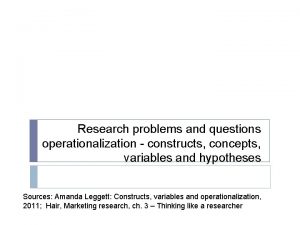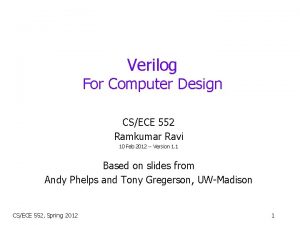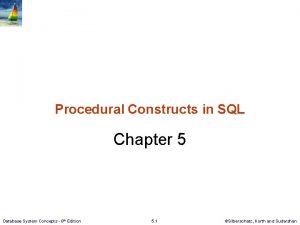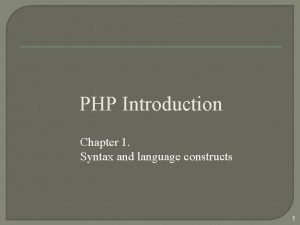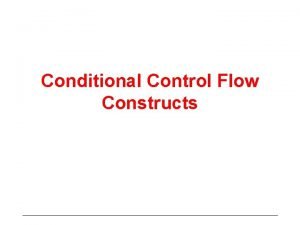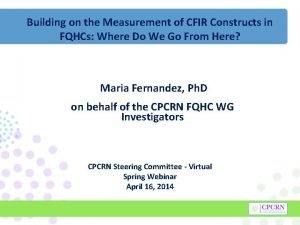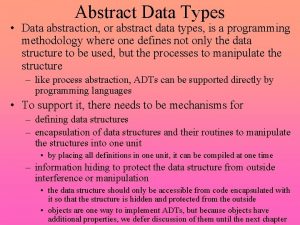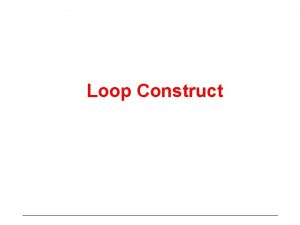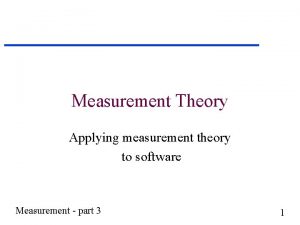PERSONALITY CONSTRUCTS THEORY MEASUREMENT AND STRUCTURE OVERVIEW Personality








- Slides: 8

PERSONALITY CONSTRUCTS: THEORY, MEASUREMENT, AND STRUCTURE OVERVIEW • Personality: organization of a person’s common tendencies • (as opposed to abilities, moods, values) • Only field interested in the ‘big picture’ of human mind • Grand Personality theories: Psycho-analysis, learning theory, humanistic psychology, evolutionary psychology • Constructs are micro theories: associated with individual traits • Permits empirical research

• Structural models: organization schemes for broad schemes e. g. , circumplex, Big Five • The majority of personality research focuses on the measurement of trait constructs and their structure. • Tiers of personality (Mc. Adams, 1996) structures may differ at different levels of analysis traits; adaptations, narratives

ASSESSMENT PHILOSOPHIES • Optimistic authority: Thorndike Everything that exists, exists in some quantity. …and that quantity can be measured • Pessimistic authority: Funder There are two kinds of personality data: • Terrible data • No data

• four standard methods: B-L-I-S 1. Self-reports 2. Informant reports 3. Behavior 4. Life data • pros and cons of each • convergence is most convincing

TEST CONSTRUCTION APPROACHES: • rational theoretically-derived then refined part-whole correlations Narcissistic Personality Inventory • factor analysis circumscribe, then factor orthogonal vs. oblique NEO-PI • empirical contrast known groups MMPI Pd scale construct without inter-correlations?

Psychometric properties 1. Reliability: • internal consistency: split-half, alpha • temporal stability: test-retest • rater reliability alpha intra-class correlation

2. Types of Validity • face validity • content validity • discriminant validity • criterion validity: concurrent and predictive

Construct validity Loevinger (1957); Cronbach & Meehl (1963) The marshaling of evidence to support the inferential leap from data to construct. Validate the construct, not an individual test Need multiple sources: internal structure, external correlates, criterion groups, studies of process, response to treatment ISSUE -why do researchers stick to one measure of a construct?
